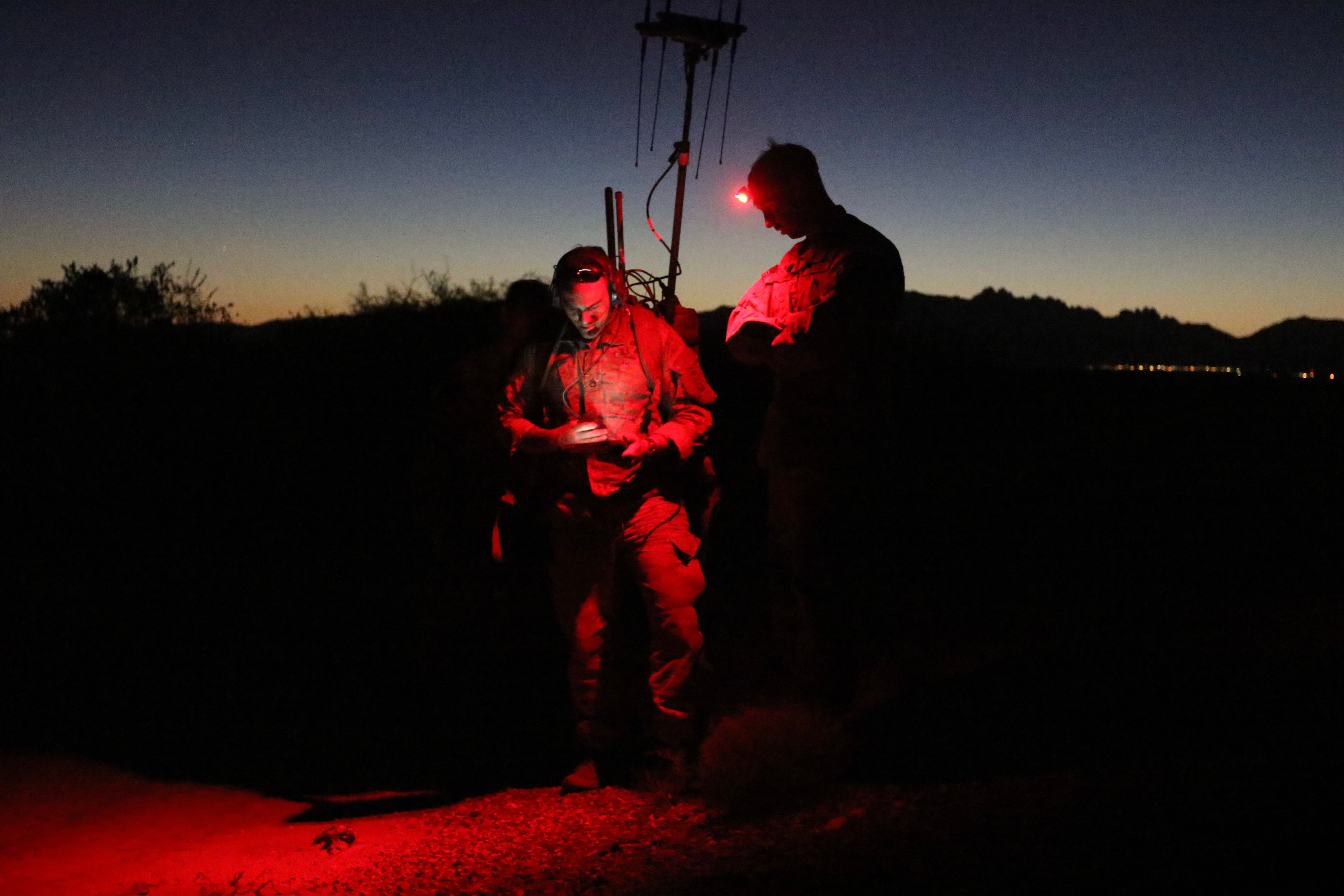WASHINGTON — Despite a slashed electronic warfare procurement proposal, the U.S. Army still plans hefty investment in research and development to build out a battlefield architecture with the ultimate goal to link with national electronic and cyber tactical systems.
The envisioned cyber and electromagnetic activities architecture would integrate a set of systems to allow the Army to conduct multidomain operations across distributed locations and connect its own tactically focused platforms, along with connecting to national strategic systems. Pending congressional approval, the Army’s research and development funding for key systems that make up the structure — most under development for years — would hold steady or slightly increase over the service’s projections, with one new large addition:
- Multi-Function Electronic Warfare: The Army cut procurement in fiscal 2022 for the airborne jamming pod mounted to a MQ-1C Gray Eagle, but it will still develop the technology, bumping its research and development request to $12 million, up from $9 million the Army predicted a year before that the project would need.
- Terrestrial Layer System Brigade Combat Team: Research funding for the first integrated cyber, signals intelligence and electronic warfare system for brigades would meet Army projections at about $39.7 million.
- Electronic Warfare Planning and Management Tool: The Army’s $16.8 million research and development request and $700,000 procurement figure matched its projections for the system to allow commanders to plan and visualize their invisible battle space.
- Terrestrial Layer System Echelons Above Brigade: The Army wants $19.5 million R&D funds for this new program that will provide commanders at echelons above brigade capabilities for sensing, improved geolocating, conducting nonkinetic fires and supporting kinetic targeting.
In contrast to the strong R&D budget, the Army’s proposed procurement budget dropped from $123 million enacted in FY21 to $48 million requested for FY22.
For one big cut, the Army zeroed out the MFEW jamming pod procurement to try to save $12 million, part of a larger divestment effort to reserve money for higher priorities.
The $12 million development request for MFEW, which falls under a larger item called Electronic Warfare Development, would support phase 2 of an other transaction authority agreement, or OTA, for engineering and an operational assessment in FY22. The Army indicated the money would go toward contractor testing, a test range and a government limited user test, which is slated for fourth quarter of 2022.
For the brigade-level Terrestrial Layer System, the biggest change was that last year’s procurement budget outlined seven systems for purchase in FY22, but the Army lowered that to six systems.
The TLS EAB system seeks to fill certain gaps between TLS BCT and larger airborne assets, with the Multidomain Task Force serving as the fielding priority.
“The operational gap that we’re trying to fill, the ‘T’ obviously in Terrestrial Layer Systems means that we’re trying to do it from the ground,” Kevin Wilson, TLS EAB lead for Electronic Warfare & Cyber at Program Executive Office Intelligence, Electronic Warfare and Sensors, said during a recent conference hosted by the Association of Old Crows. “We’re trying to pick up some of the signals and emitters that are at distances too great to do with TLS BCT. They’re using a 250 foot tethered drone. Pretty close to the FLOT [forward line of own troops] and the physics of that limit that to some ranges. We’re trying to get after ranges that are greater than that, but less than the ones that absolutely require air or national assets.”
The system will provide also provide a jamming capability for these larger echelons, as the Army realized during the counterinsurgency fight of the last 20 years that it needs to fight at higher echelons.
The budget funds would initiate the development of prototypes and integration of TLS EAB mission equipment. Wilson said the Army is planning to award an OTA for prototypes using middle-tier acquisition in second quarter of FY22, but prior to that, the service is working on pre-prototypes. The Army plans a request for white papers in July, with a decision by the Army Requirements Oversight Council July 9. The first unit equipped is planned for fourth quarter FY24.
The glue holding much of these capabilities together is the Army’s Electronic Warfare Planning and Management tool, a command-and-control planning capability that allows forces to visualize the potential effects of electronic warfare in the field and chart courses of action to prevent jammed capabilities. The $16.8 million R&D budget would go continue Increment 1, which includes a series of four software capability drops.
Other aspects of the Army’s CEMA architecture include plugging these systems into the larger joint and national structure.
“Where the real magic happens is when they’re able to reach back to the sanctuary and take advantage of national capabilities,” Col. Kevin Finch, project manager for Electronic Warfare & Cyber at PEO IEWS, said during the Association of Old Crows conference. “Whenever we end up going up against that near peer threat or the peer threat, you may not be able to get to them on net. But, if you have a presence forward to have some RF-enabled cyber, you now have platforms at the tactical edge that will allow you to get into those systems. It now gets the commander a different series of abilities to do that.”
Finch listed one of those capabilities as the Joint Common Access Platform, which will allow members of U.S. Cyber Command’s cyber mission force to conduct offensive cyber operations.
Finch described the ultimate vision for the CEMA architecture and multidomain operations by 2035:“It’s not just having a capability, a standalone capability as integrated but also being able to take advantage of capabilities at national to very quickly reach back and if they need a specific capability, we’re able to bring that forward in a rapid fashion.”
Mark Pomerleau is a reporter for C4ISRNET, covering information warfare and cyberspace.





